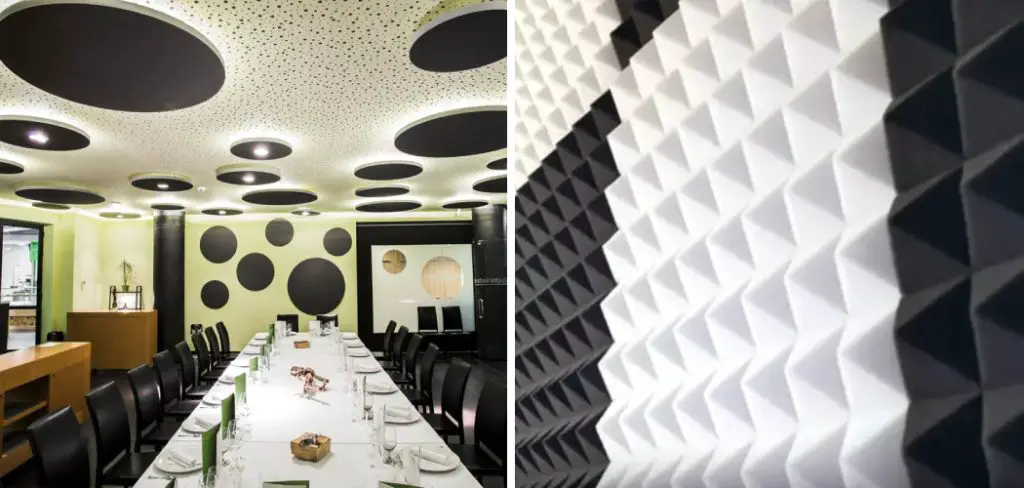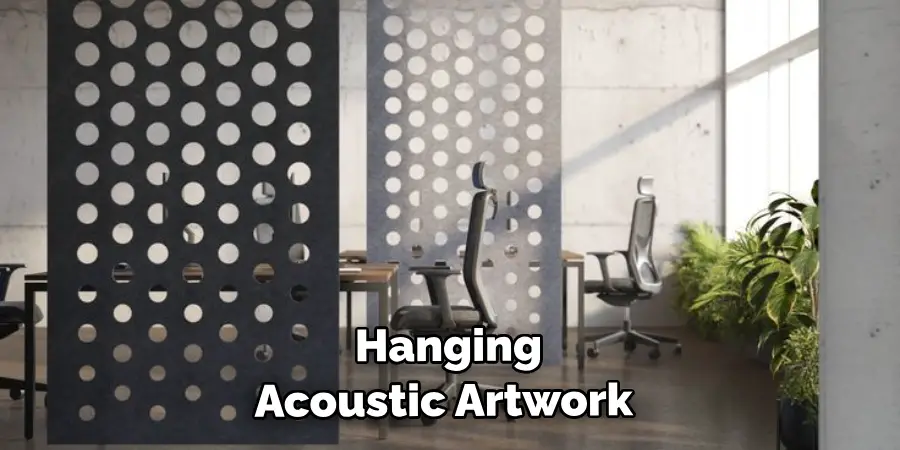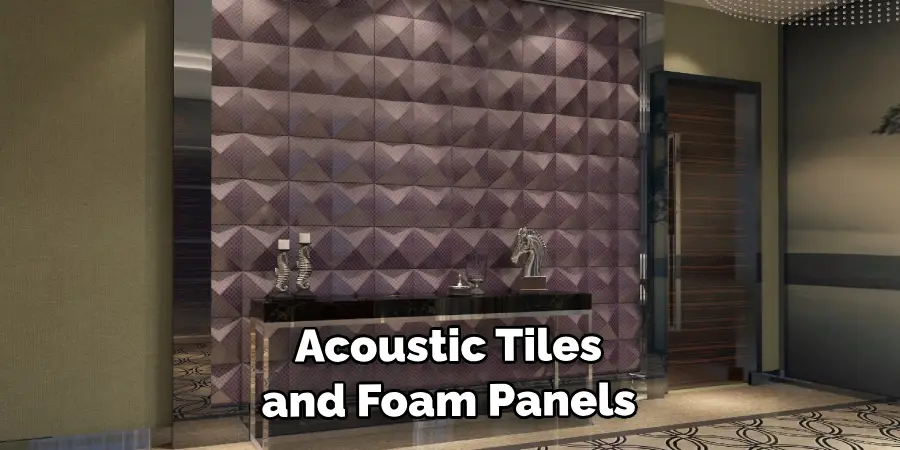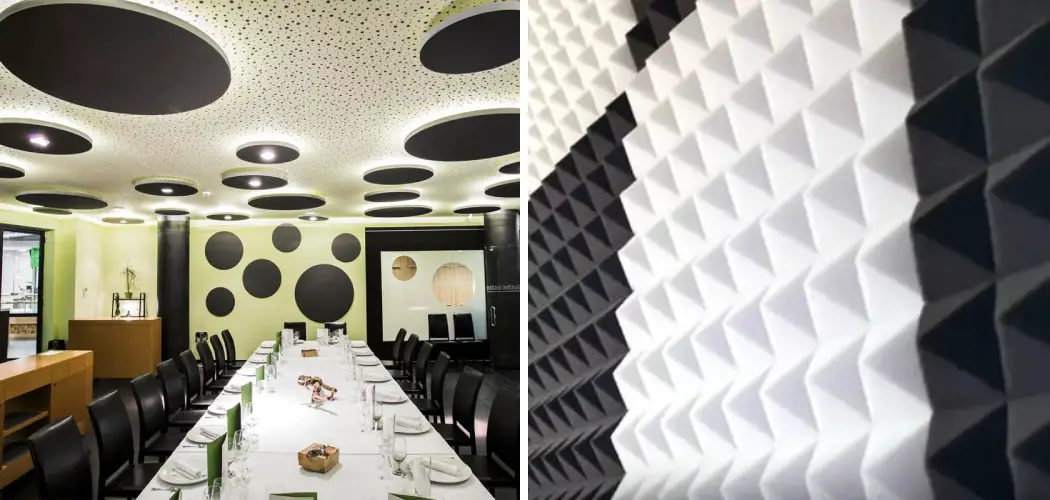Have you ever been in a room with tall ceilings and noticed that your conversations seem to echo endlessly? It can be really frustrating — especially during video calls or when working from home. Fortunately, there are ways you can reduce the echoes and make the space easier on your ears!

In this blog post on how to reduce echo in a room with high ceilings we will outline proven strategies for reducing uncomfortable echoes in rooms with high ceilings, so whether you’re trying to dampen some sound for remote conferences or just trying to improve convenience at home, read on to learn how!
11 Step-by-step Guidelines on How to Reduce Echo in a Room With High Ceilings
Step 1: Change the Shape of the Room
Move furniture around and use area rugs, curtains, or carpets to break up the sound waves bouncing off surfaces. It may also help to install acoustic tiles or foam panels on the walls and ceilings. These materials absorb sound waves rather than reflecting them back into the room, making it easier to talk without an echo. You can also use furniture to create a more intimate space, such as placing a couch in the middle of the room.
Step 2: Soften Hard Surfaces
Hang curtains over windows and doors, replace hardwood floors with carpets or rugs, add fabric wall hangings, and add soft furniture. These items absorb sound waves rather than reflecting them back into the room. It may also help to cover hard surfaces with acoustic or foam panels.
Step 3: Add Soundproofing Material
Soundproofing materials like acoustic foam panels or blankets can be installed on walls, ceilings, and floors to help dampen sound waves and reduce echoes in a room with high ceilings. You can buy these materials online or in stores, and many come with easy-to-follow instructions for installation.
Step 4: Place Absorbing Objects in the Room
Objects like bookshelves, pillows, and curtains can be used to absorb sound waves rather than reflecting them back into the room. If you’re looking for a more permanent solution, consider installing soundproofing panels or blankets on walls and ceilings. This will help to dampen the sound waves and reduce echoes.

Step 5: Install Sound Diffusers
Sound diffusers are a great way to reduce echoes in rooms with high ceilings. Place them around the room in strategic areas and they will help scatter sound waves instead of just reflecting them back into the room. However, it’s important to note that sound diffusers do not absorb sound waves like acoustic foam panels or blankets do.
Step 6: Cover Windows With Heavy Curtains
Windows can be a major source of echoes in rooms with high ceilings. Cover them with heavy curtains or drapes to reduce the amount of sound waves that escape the room and reflect back into it. It may also help to use soundproofing materials on the windows and walls. Although this won’t reduce echoes completely, it can help to reduce them significantly.
Step 7: Place Sound-Absorbing Furniture
Sound-absorbing furniture like couches and armchairs can be used to absorb sound waves instead of reflecting them back into the room. Placing furniture strategically around the room can help reduce echoes and improve sound quality in rooms with high ceilings. It may also help to place acoustic foam panels on the walls and ceilings. But furniture is a great way to reduce echo in a room with high ceilings.
Step 8: Hang Soundproofing Blankets and Panels
Hanging acoustic blankets or panels on walls and ceilings is an effective way to reduce echoes in a room with high ceilings. Make sure that the blankets or panels are properly installed and that they cover the entire area. Otherwise, the sound waves will just be reflected back into the room.

Step 9: Add Carpet to the Floor
Adding carpet to your floor can help reduce echoes in a room with high ceilings. Carpet absorbs sound waves much better than hardwood floors, so it’s a great way to improve sound quality. It may also help to place acoustic foam panels or blankets on the walls and ceilings. But installing carpet on the floor is an easy and effective way to reduce echo in a room with high ceilings.
Step 10: Install a Ceiling Fan
Ceiling fans help to reduce echoes in large rooms with high ceilings. The fan blades create turbulence in the air, which helps to dissipate sound waves rather than reflecting them back into the room. You can also use a standing fan to create airflow, but it won’t be as effective as a ceiling fan.
Step 11: Hang Acoustic Artwork
Hanging acoustic artwork or wall hangings on the walls can help to reduce echoes in a room with high ceilings. The artwork helps to break up sound waves and absorb them, making it easier to talk without an echo. Always make sure that the artwork is properly installed and that it covers the entire area. It may also help to install acoustic foam panels or blankets on the walls and ceilings. But acoustic artwork is a great way to reduce echo in a room with high ceilings.

These 11 steps are sure to help you reduce echo in a room with high ceilings! Try some of these strategies today and see what works best for you.
Additionally, it’s important to remember that soundproofing is not a one-size-fits-all solution. You may need to adjust the steps outlined above depending on the specific space and sound requirements of your room. With patience and trial and error, however, you can create an echo-free environment in rooms with high ceilings!
Do You Need to Use Professionals?
Reducing echo in a room with high ceilings is not an overly difficult task, however, depending on the space and sound requirements of your room, it may be beneficial to use professionals. Professional acoustic consultants can help assess the unique layout and acoustics of your space, and provide tailored advice on how to reduce echo in a room with high ceilings. With their expertise, you can be sure that your room will be equipped with sound-dampening strategies that are tailored to the specifics of your space.
So if you’re looking for a more permanent solution to reduce echo in a room with high ceilings, it may be beneficial to consider hiring a professional acoustic consultant. They can provide you with the know-how and tools you need to create a soundproof and echo-free space!
Frequently Asked Questions
Q: How Can I Reduce Echo in a Room With High Ceilings?
A: You can reduce echo in a room with high ceilings by changing the shape of the room, softening hard surfaces, adding soundproofing material, placing absorbing objects in the room, installing sound diffusers, covering windows with heavy curtains, placing sound-absorbing furniture, hanging soundproofing blankets and panels, adding carpet to the floor, installing a ceiling fan, and hanging acoustic artwork. Additionally, it may be beneficial to hire a professional acoustic consultant for tailored advice on how to reduce echo in your specific space.
Q: What Materials Should I Use to Reduce Echo?
A: To reduce echo in a room with high ceilings, you should use materials that absorb sound waves rather than reflecting them back into the room. This includes acoustic tiles and foam panels on walls and ceilings, curtains, rugs or carpets on floors, soundproofing blankets and panels, heavy curtains for windows, and acoustic artwork. These materials will help to dampen sound waves and reduce echoes in your room.

Q: How Long Does It Take to Reduce Echo in a Room With High Ceilings?
A: The amount of time it takes to reduce echo in a room with high ceilings will depend on the type and amount of soundproofing material used and the size of the room. Generally, it should take no longer than a few hours if you are taking the DIY approach. However, if you are using a professional acoustic consultant, it may take longer as they will likely assess the room first and create a tailored plan of action.
Conclusion
Learning how to reduce echo in a room with high ceilings may sound like a tedious task, however, it doesn’t have to be! Adding acoustic panels to walls and furniture can help absorb echoes, making the room more comfortable without having to sacrifice space. Additionally, there are many other ways of reducing bangs and booms, such as adding carpeting or rugs to flooring or bringing in fabric-covered furniture.
Last but not least, consider soundproofing audio recordings and equipment by investing in proper insulation and/or hanging noise-absorbing materials. With these strategies in mind, you’ll be able to enjoy your time spent in a much quieter atmosphere with fewer distractions. Though it may take some trial and error before really finding the right approach for you and your space, the time and effort will definitely pay off!

